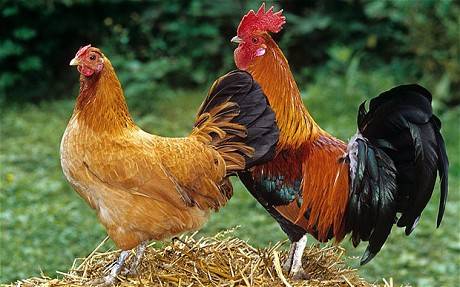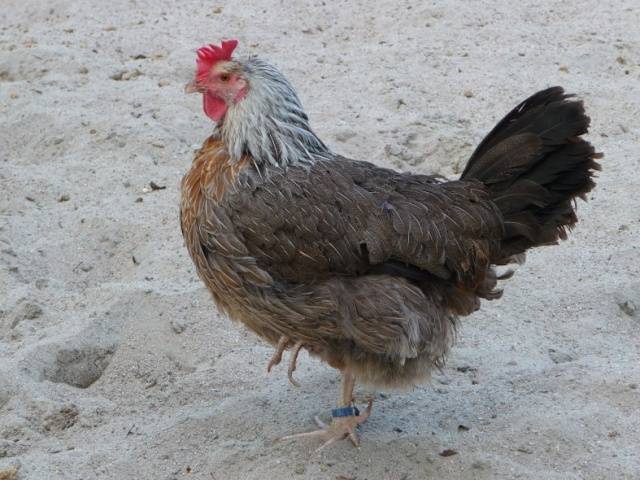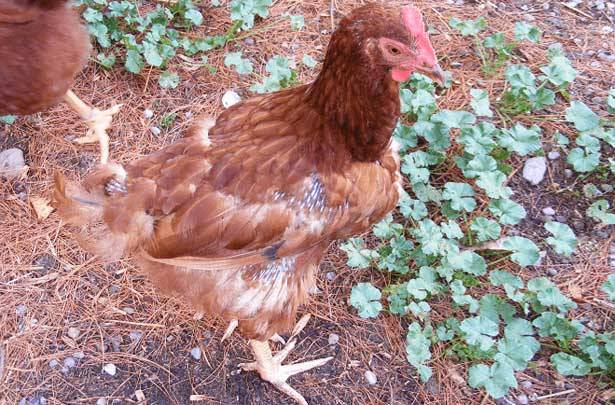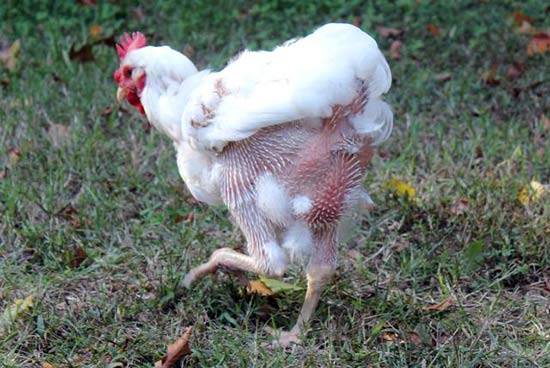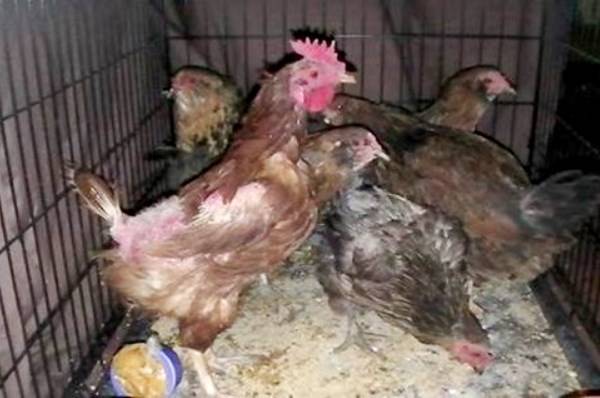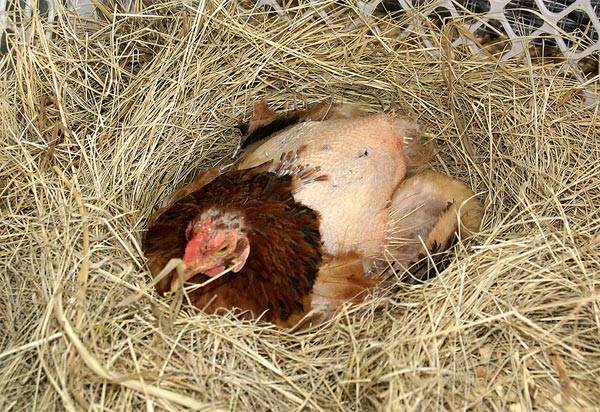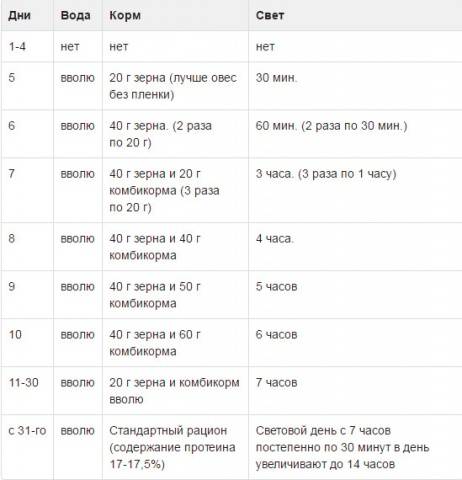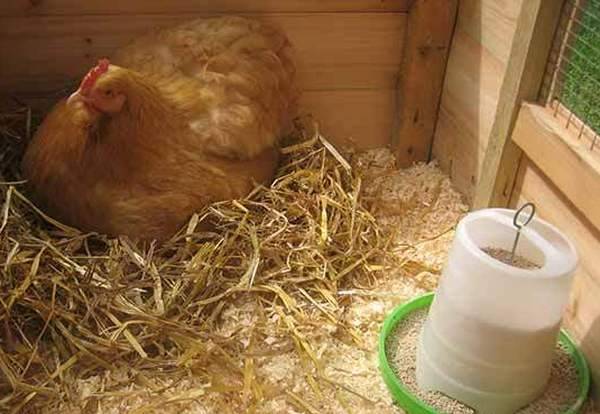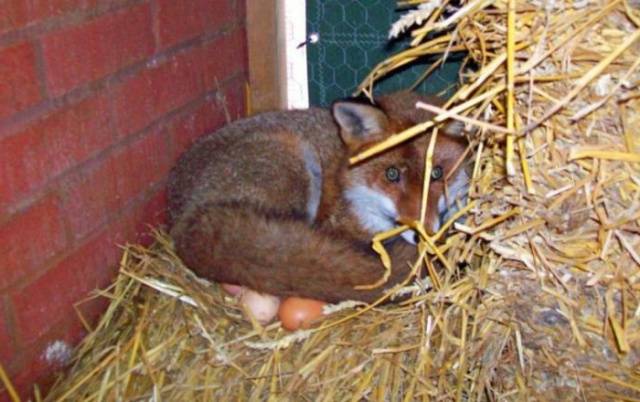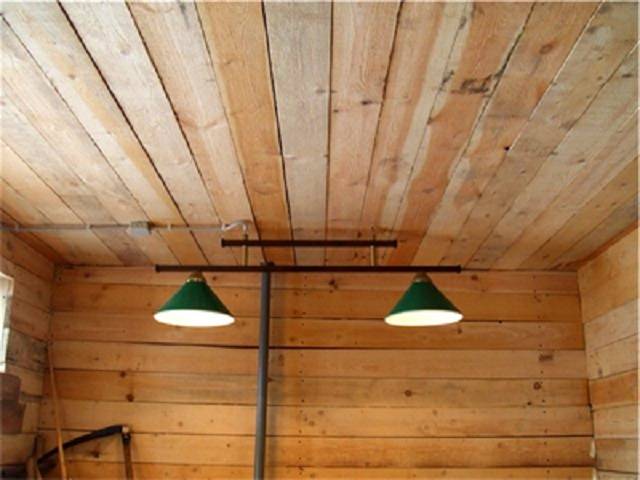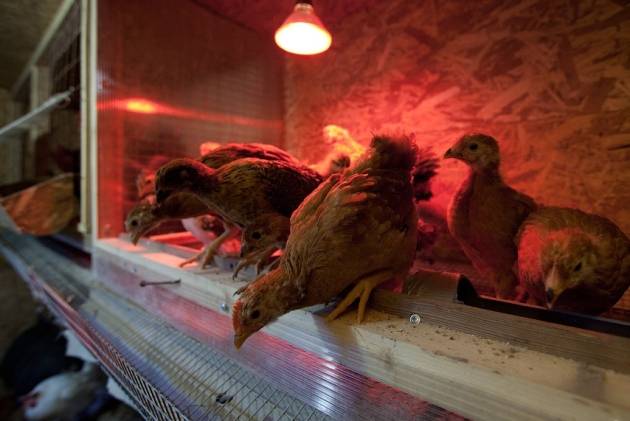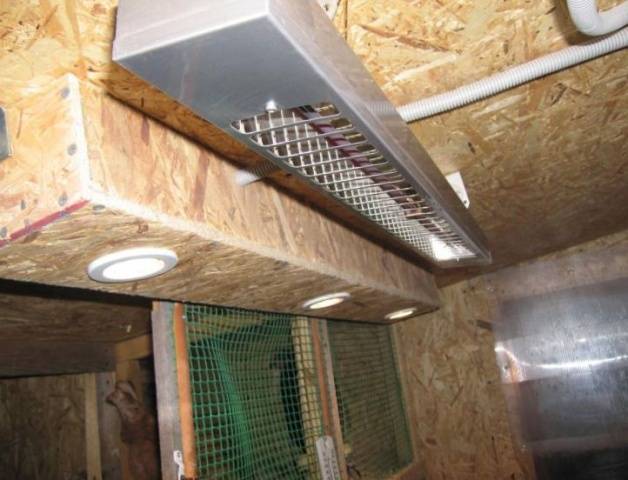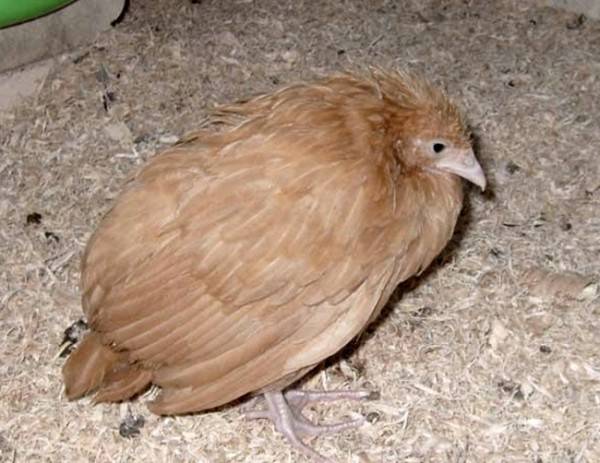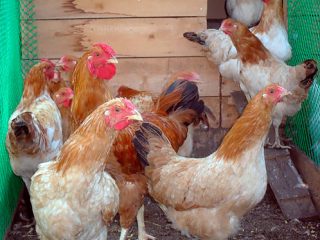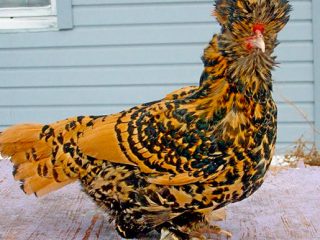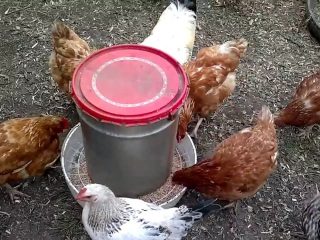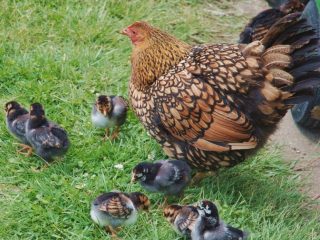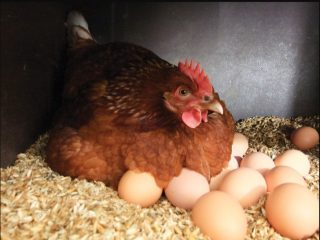Content
Buying egg-breed chickens, the owners of private farms rely on the daily receipt of eggs from each laying hen.
- Why do you value 4 chickens and a rooster stolen from you so dearly?
- So they laid eggs, I sold them and lived on this money.
- How many eggs did the hens lay per day?
— 5.
- And the rooster?
- And the rooster.
For some, roosters lay eggs, while for others, laying hens refuse their direct duties.
Figuring out the reasons why the laying hens are not laying and what to do about the problem can take some time. This is not always obvious.
Pullets do not rush
The hens were bought by chickens, they are young, but they are in no hurry to lay eggs. Most often, there is only one reason why young laying hens do not rush: they are still too young.
Egg crosses begin to lay at 3.5-4 months, but egg breeds of chickens, with rare exceptions, do not lay eggs earlier than 5 months. Better to remember exactly which chickens were purchased.
If this is a cross that has not begun to rush at 4 months, you need to take a closer look at the conditions of detention and comments. If the chicken is an egg breed, wait a little longer.
Crosses are good because they start laying early and lay a lot of eggs, but breeding them is unprofitable. The second generation won't be that productive. The second minus of the cross is a decrease in egg production after a year.
Thoroughbred laying hens begin to lay later, often lay fewer eggs, but their offspring can be left for self-repair, no longer worrying about where to get young laying hens. Their high egg production usually lasts longer than crosses.
Adult chickens do not rush
There may be several reasons why adult laying hens do not rush:
- old chickens were bought;
- lack of lighting;
- low temperature in the chicken coop;
- too many chickens per unit area;
- lack of nesting sites;
- molting;
- improper feeding;
- illness;
- stress;
- striving for incubation;
- predators;
- laying eggs in secret places.
It makes sense to consider each of the reasons separately.
Old chickens bought
When buying already grown laying hens, unscrupulous sellers can sell the old bird. That is why it is better to buy either chicks or hatching eggs. At least the age of the layers will be known exactly.
Unfortunately, old chicken is only suitable for soup, although it is quite difficult for a layman to recognize old layers among egg crosses. Crosses lay almost until the last day, but the number of eggs, of course, is much less than young laying hens can lay.
Molting
One of the main reasons why laying hens stopped laying. And one of the least troublesome. Having melted, the laying hens begin to lay eggs again. The problem here is that moulting in chickens lasts more than one month.
There are several types of moulting in chickens:
- juvenile. Change of feathers in "egg" chickens at 4 weeks;
- periodic in roosters. Begins 2-3 months earlier than seasonal molt in laying hens and occurs without loss of live weight;
- seasonal molting in laying hens.It begins in autumn when the air temperature drops and the daylight hours decreases.
Natural seasonal molt
Natural molting in laying hens lasts 3-4 months, starting at the age of 13 months. This is the main reason for the rejection of crosses from egg poultry farms. After a year, the egg-laying hens decrease in egg production, and even wait almost six months until they molt? Nobody needs it. Yes, and with cross-laying hens in a personal backyard, the situation will be similar. And at 2 years old, some of the laying hens will already begin to die of old age. Therefore, if you take into account molting and the desire to continue keeping these particular hens, it is better to immediately choose thoroughbred layers.
In thoroughbred laying hens, molting is a response to shorter daylengths and lower temperatures. Usually, by the same time, the first reproductive cycle in layers ends and the chickens go to rest, since the loss of old feathers is stimulated by thyroxine, a thyroid hormone that inhibits ovulation. During egg-laying, the action of this hormone is suppressed. In other words, a laying hen cannot shed and lay eggs at the same time.
At the same time, molting is vital for chickens. During molting, excess fat stores are consumed, and the activity of the adrenal glands increases. But sexual and reproductive functions are reduced. In general, during moulting, a laying hen increases its metabolic rate and protein synthesis, which is necessary for new feathers and egg production in the next reproductive cycle.
How to reduce shedding
Moulting time in layers can be shortened by providing the hens with a high-grade feed with increased levels of methionine and cystine. The content of these substances in feed for molting laying hens should be 0.6-0.7%. These amino acids are found in animal supplements and waste from sunflower oil production:
- dry return;
- meat and bone meal;
- fish flour;
- sunflower cake and meal;
- feed yeast.
Artificial methionine is also used, adding it at the rate of 0.7 -1.5 g / kg of feed.
Without zinc and pantothenic acid, the formation and growth of feathers is disturbed in laying hens, therefore, the content of these substances in the compound feed should be: zinc 50 mg / kg, vitamin B₃ 10 - 20 mg / kg. Chickens get these elements from green plants, grass meal, cake, bran, animal feed, yeast.
Forced molt
It is very disadvantageous for the owner to wait 3 months for the laying hen to molt. Therefore, forced molting is often used, which can be carried out in three ways: zootechnical, chemical and hormonal.
Hormonal way of molting in layers
It is carried out with the help of injections of hormones that inhibit ovulation in layers.
After 20 mg of progesterone IM, egg-laying ceases on the second day. After a few days, the laying hen begins to molt. For a complete shedding, one injection is not enough, therefore, two weeks later, the same dose of progesterone is injected again.
In private households, it is more convenient to inject the hormone 5 mg for 25 days. With this regimen, laying hens spill from 11 to 19 days from the beginning of the hormone administration. With this method, the period of molting in layers is reduced and the synchronization of molting in all hens takes place, which allows you to get more eggs per year.
After cessation of progesterone injections, egg-laying resumes after 3.5 weeks.
For private traders who are wary of using injections, there is another way to cause an accelerated molt: feed the dried thyroid gland to the laying hens by mixing it into the feed. In this case, molting is faster, and with a one-time feeding of 7 g of the drug per one laying hen, the molt is more intense than with the same dose extended over several days.
It has been experimentally established that the number of eggs in a laying hen that molted with the help of hormonal preparations does not differ from that in a hen that molted naturally. The quality of the eggs of the "hormonal" laying hen does not improve.
At the same time, egg production in laying hens forcibly molted using zootechnical methods is higher than that of those that molted using hormones or naturally.
Zootechnical method
The essence of the method is that chickens are forced to molt with the help of stress. For example, closing them for several days in complete darkness without food or water.
Before using such means, preliminary preparation is carried out in order to reduce the number of birds that died from such "humane" influences.
Preparation for molting begins at the end of the first period, when the egg production of birds decreases to 60%. A week and a half before molting, the chickens are fed an increased amount of calcium either using a special compound feed, or pouring limestone into the feeder. Vitamins are added to the water.
To speed up molting, on day 10, the methionine rate in the feed is increased by one and a half times. From 10 to 30 days, feed with a high protein content (21%) is given. This stimulates the regrowth of the new feather. After 30 days, the protein content of the feed is reduced to 16% to stimulate the onset of lay.
An approximate scheme of forced molting of chickens
Chemical method of forced molting
It consists in feeding chickens with drugs that block egg-laying.
Crowding
The most dense planting of chickens is used in poultry farms, but even there an area is allocated for each chicken not less than the size of an A4 paper sheet. On the perch, each bird should get 15 -20 cm. With a higher density of chickens per unit area, conflicts will inevitably arise between them. Chickens will be constantly under stress. Chickens will respond to such conditions by stopping egg production. It is better if chickens have extra living space than a lack of it.
Lack of nests or tendency to incubate
Chickens do not divide egg-laying places on the principle "this is only mine, and you get out of here." Therefore, in this case, you can only put two boxes for a dozen chickens. This is the minimum required. Better if there are more boxes.
Lack of places to lay eggs - the case when the egg production has not really decreased, just laying hens began to lay somewhere else. We will have to conduct a thorough search of the house, outbuildings, vegetable garden, bushes, nettle thickets and other secluded places where eggs laid by chickens may be.
Chickens will behave in the same way, if for some reason they are not satisfied with the straw boxes for nests. The reasons for the unsuitability are usually known only to the chickens.
Laying hens, determined to become hens, and even more so show miracles of ingenuity to hide the eggs from the eyes of people and sit them quietly.
Purebred chickens often have a well-developed incubation instinct. In this case, the hen either hides the eggs or tries to sit on them in the nest. There are few ways to fight here: you can try to close it in a box without food and water, which, most likely, will cause an unplanned molt; or dip it in a bucket of cold water. It helps badly.
If, for no apparent reason or a change in diet for a long time, the number of eggs suddenly begins to decrease, you need to be puzzled by searches around the hen house and find out if there are passages for predators in the hen house.
Predators
Of course, the fox will not collect eggs and lay on them. It's too shallow for her, she'll strangle the chickens. But rats or weasels may well feast on chicken eggs. Moreover, the rats running around the coop do not particularly bother the laying hens, so it is impossible to understand whether the chickens have stopped laying eggs or the products are being eaten by rats.
A weasel attracted by rats may well eat "rat food" - eggs.
Lack of lighting
With a decrease in daylight hours towards autumn, chickens usually react by molting, but in winter, having already molted, they often do not lay eggs due to too short daylight hours. In southern regions, where daylight hours are longer, there may be an option with a decrease in egg production, but not a complete cessation of egg-laying. Here the owner can decide for himself whether he needs a lot of eggs in the winter or "it will do."
Residents of the northern regions have a very hard time due to the very short daylight hours. There is a way out in the presence of electricity in the house. It is enough to put fluorescent lamps in the chicken coop and provide the chickens with at least 14 (16 hours is the optimal time) hours of lighting. It doesn't matter if it's natural or artificial. Egg production will return to the summer level, provided that the temperature in the hen house is not too low.
Air temperature too low
This is also for the most part a problem of residents of the northern regions. At low temperatures, the layers stop laying, so the chicken coop must be insulated. Very high temperatures are not required. 10 - 15 ° C will be enough. But at lower degrees, the hens may refuse to "work".
This is also for the most part a problem of residents of the northern regions. At low temperatures, the layers stop laying, so the chicken coop must be insulated. Very high temperatures are not required. 10 - 15 ° C will be enough. But at lower degrees, the hens may refuse to "work".
In addition to the fact that the hens will walk at a low temperature at which they should not produce eggs, you will also cool the chicken coop.
In addition to the fact that the hens will walk at a low temperature, at which they should not produce eggs, you will also cool the chicken coop.
The chicken coop must be insulated for the winter. If that's enough, you can leave it that way. If the frosts are expected to be very strong, it is better to equip the chicken coops with heaters. With a small volume of the chicken coop, infrared lamps do a good job with this role. Depending on the size of the room, you may not even need fluorescent lights. Red lighting is enough for chickens. But this must be looked at on the spot.
The chicken coop must be insulated for the winter. If that's enough, you can leave it that way. If the frosts are expected to be very strong, it is better to equip the chicken coops with heaters. With a small volume of the chicken coop, infrared lamps do a good job with this role. Depending on the size of the room, you may not even need fluorescent lights. Red lighting is enough for chickens. But this must be looked at on the spot.
In the case of a large chicken coop, the systems will have to be combined by installing fluorescent lamps and infrared heaters.
In the case of a large chicken coop, the systems will have to be combined by installing fluorescent lamps and infrared heaters.
Improper feeding
Chickens can stop laying eggs due to obesity or malnutrition, if the diet is not properly formulated or if the feed is too much / too little. With a lack of protein, minerals, amino acids or vitamins that stimulate egg production, even with visible well-being, chickens can stop laying.
The bran-based compound feed is affordable, but because the bran contains too much phosphorus, the hen cannot absorb calcium. As a result, the laying hen may not just stop laying, but start “pouring eggs”, that is, the laid egg will be without shell, enclosed only in the inner membrane.
Chickens show good results in egg production with two variants of compound feed for layers.
First option
Composition: corn, soybeans, barley, calcium carbonate, bran, turf, alfalfa, calcium phosphate.
Chemical analysis: protein 16%, ash 12.6%, fiber 5.3%, oil 2.7%.
Vitamins and minerals: selenium 0.36 mg / kg, copper 15 mg / kg, methionine 0.35%, vit. A 8000 IU / kg, vit. D₃ 3000 IU / kg, vit. E 15 mg / kg.
Enzymes: phytase.
Second option
Composition: corn, soybeans, wheat flour, calcium carbonate, table salt, synthetic methionine, synthetic lysine.
Chemical analysis
protein 15.75% | calcium 3.5% |
ash 12% | methionine + cystine 0.6% |
fiber 3.5% | ash insoluble in hydrochloric acid: max. 2.2% |
oil 3% | phosphorus 0.5% |
Vitamins and minerals: vit. A 8335 ME / kg, vit. D₃ 2500 IU / kg, copper 4 mg / kg, iron 25 mg / kg, manganese 58 mg / kg, zinc 42 mg / kg, iodine 0.8 mg / kg, selenium 0.125 mg / kg.
Enzymes: phytase, beta-glucanase.
Obesity or wasting is determined by picking up the laying hen and feeling the keel. According to the results of visual and tactile examination, the chickens increase / decrease the diet.
Diseases
Diseases also do not contribute to an increase in egg production. Moreover chicken diseases there are many and not all of them are harmless to humans. No, it's not about the mythical bird flu, but about the very real leptospirosis and salmonellosis.
But the most common in chickens are colds, diseases of the intestines and stomach, goiter inflammation and worming.
If the laying hen sits, ruffled, away from the companions, she is not offended by the flock, she is sick.
The death of a sick chicken from the beaks of other layers is half the trouble. Worse if the chicken was sick with some kind of infectious disease. In this case, all the chickens that ate the poor fellow will become infected.
Therefore, when a sick laying hen appears, the chicken is separated from the rest, the room is disinfected and they do not hesitate to call the veterinarian. It is possible to treat chickens with "folk remedies", but with a great risk of losing the whole herd.
Attempts to drive the worms with "folk remedies" often ended with the fact that after giving the "traditional" anthelmintic, the worms came out of the animal in tangles.
Stress
If you have everything in order with the chicken coop, nests, feed, chicken health, and the laying hens suddenly stopped laying, it may be due to stress.
If you have everything in order with the chicken coop, nests, feed, chicken health, and the laying hens suddenly stopped laying, it may be due to stress.
A stress factor for hens can be: changing the type of litter; an outsider entering the chicken coop; a bulldozer driving down the street; a neighbor with a jackhammer and more.
A stress factor for hens can be: changing the type of litter; an outsider entering the chicken coop; a bulldozer driving down the street; a neighbor with a jackhammer and more.
It is unlikely that it will be possible to make ideally stress-free conditions for layers, and after stress they will begin to rush no earlier than a week later.
In this respect, egg-bearing crosses are much more convenient. Layers of crosses are stress-resistant to the point that they calmly continue to lay eggs, having been in the dog's mouth.
Let's summarize
Keeping laying hens is quite troublesome if the owner wants to get the maximum number of eggs from his layers. If you look at the world easier and do not try to get 5 eggs a day from four layers and one rooster, then the amount of trouble is significantly reduced. Homemade eggs will never be cheaper than store eggs, and even more so they will not be free. Due to the small number of livestock and the purchase of feed in small batches, the cost of domestic eggs is always higher. But as the hens say: "But I know what this laying hen ate."
